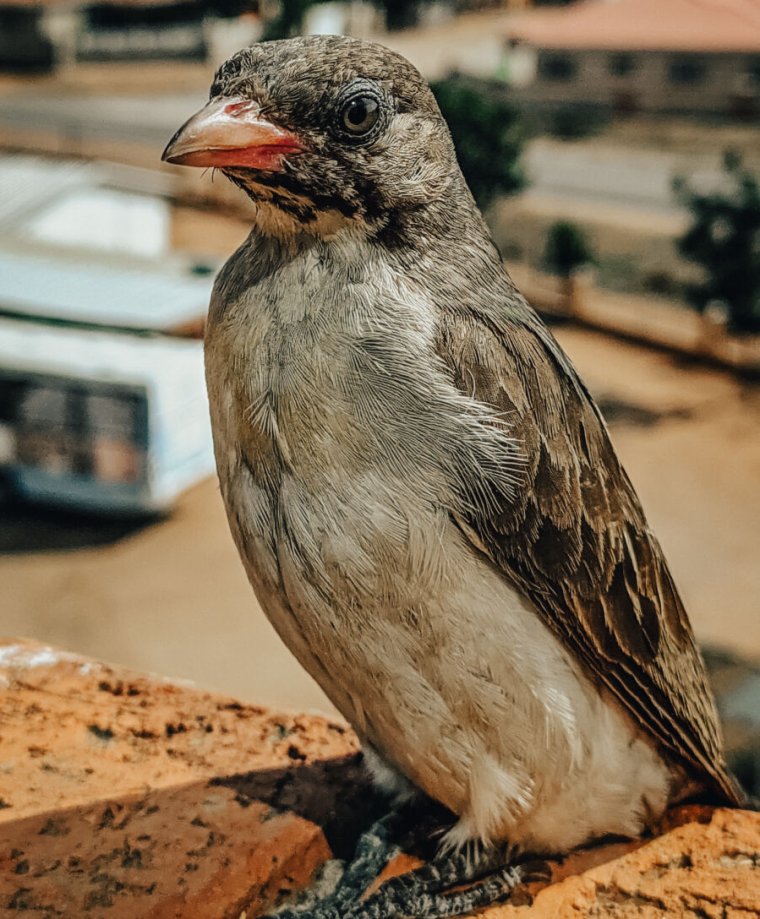
With all the technological advances humans have made, it may seem like we’ve lost touch with nature—but not all of us have. People in some parts of Africa use a guide more effective than any GPS system when it comes to finding beeswax and honey. This is not a gizmo, but a bird.
The Greater Honeyguide (highly appropriate name), Indicator indicator (even more appropriate scientific name), knows where all the beehives are because it eats beeswax. The Hadza people of Tanzania and Yao people of Mozambique realized this long ago. Hadza and Yao honey hunters have formed a unique relationship with this bird species by making distinct calls, and the honeyguide reciprocates with its own calls, leading them to a hive.
Because the Hadza and Yao calls differ, zoologist Claire Spottiswoode of the University of Cambridge and anthropologist Brian Wood of UCLA wanted to find out if the birds respond generically to human calls, or are attuned to their local humans. They found that the birds are much more likely to respond to a local call, meaning that they have learned to recognize that call.
Come on, get that honey
To see which sound the birds were most likely to respond to, Spottiswoode and Wood played three recordings, starting with the local call. The Yao honeyguide call is what the researchers describe as “a loud trill followed by a grunt (‘brrrr-hm’) while the Hadza call is more of “a melodic whistle,” as they say in a study recently published in Science. The second recording they would play was the foreign call, which would be the Yao call in Hadza territory and vice versa.
The third recording was an unrelated human sound meant to test whether the human voice alone was enough for a honeyguide to follow. Because Hadza and Yao voices sound similar, the researchers would alternate among recordings of honey hunters speaking words such as their names.
So which sounds were the most effective cues for honeyguides to partner with humans? In Tanzania, local Hadza calls were three times more likely to initiate a partnership with a honeyguide than Yao calls or human voices. Local Yao calls were also the most successful in Mozambique, where, in comparison to Hadza calls and human voices, they were twice as likely to elicit a response that would lead to a cooperative effort to search for a beehive. Though honeyguides did sometimes respond to the other sounds, and were often willing to cooperate when hearing them, it became clear that the birds in each region had learned a local cultural tradition that had become just as much a part of their lives as those of the humans who began it.
Now you’re speaking my language
There is a reason that honey hunters in both the Hadza and Yao tribes told Wood and Spottiswoode that they have never changed their calls and will never change them. If they did, they’d be unlikely to gather nearly as much honey.
How did this interspecies communication evolve? Other African cultures besides the Hadza and Yao have their own calls to summon a honeyguide. Why do the types of calls differ? The researchers do not think these calls came about randomly.
Both the Hadza and Yao people have their own unique languages, and sounds from them may have been incorporated into their calls. But there is more to it than that. The Hadza often hunt animals when hunting for honey. Therefore, the Hadza don’t want their calls to be recognized as human, or else the prey they are after might sense a threat and flee. This may be why they use whistles to communicate with honeyguides—by sounding like birds, they can both attract the honeyguides and stalk prey without being detected.
In contrast, the Yao do not hunt mammals, relying mostly on agriculture and fishing for food. This, along with the fact that they try to avoid potentially dangerous creatures such as lions, rhinos, and elephants, and can explain why they use recognizably human vocalizations to call honeyguides. Human voices may scare these animals away, so Yao honey hunters can safely seek honey with their honeyguide partners. These findings show that cultural diversity has had a significant influence on calls to honeyguides.
While animals might not literally speak our language, the honeyguide is just one of many species that has its own way of communicating with us. They can even learn our cultural traditions.
“Cultural traditions of consistent behavior are widespread in non-human animals and could plausibly mediate other forms of interspecies cooperation,” the researchers said in the same study.
Honeyguides start guiding humans as soon as they begin to fly, and this knack, combined with learning to answer traditional calls and collaborate with honey hunters, works well for both human and bird. Maybe they are (in a way) speaking our language.
Science, 2023. DOI: 10.1126/science.adh412



3175x175(CURRENT).thumb.jpg.b05acc060982b36f5891ba728e6d953c.jpg)

Recommended Comments
There are no comments to display.
Join the conversation
You can post now and register later. If you have an account, sign in now to post with your account.
Note: Your post will require moderator approval before it will be visible.